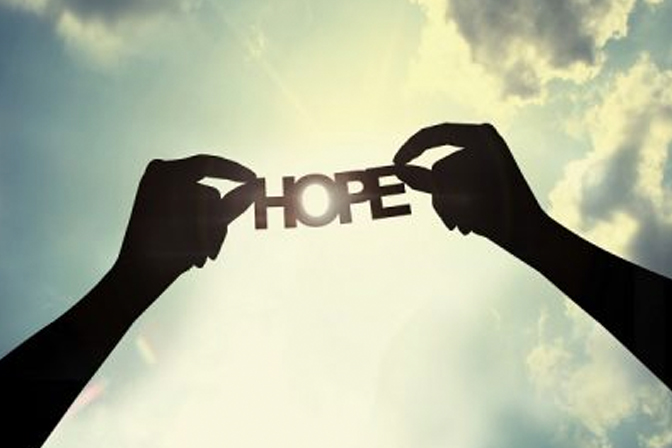The Recovery of Craig K.






Jessica Joiner, LCSW, LAC, has over a decade of experience working with those suffering from addiction, complex trauma, and co-occurring disorders. She uses her experience along with the extensive skills gained to address the many issues that arise for athletes.
In her workshop hosted by Harmony Foundation, Joiner discussed the prevalence of substance misuse among athletes, various ways of identifying “red flags,” and evidence-based interventions that can be helpful in combating the misuse of drugs and alcohol.
As Joiner explained, there are three main reasons athletes misuse substances: pain resulting from injuries, stress from incessant pressure to win, and the desire to enhance performance artificially. Over the years and decades, these reasons have stayed the same but the drugs involved are now more sophisticated than ever, with more options.
The statistics paint a grim picture. Substance misuse is prevalent in high school: approximately 19 percent of males and 14 percent of females binge drink in high school. 21 percent of teens use marijuana and up to 6.6 percent have used performance-enhancing drugs (PEDs).
It gets worse in college where 42 percent of students admit to binge drinking, 28 percent use cannabis, and around 11,000 NCAA athletes admit to taking PEDs. There is a strong correlation between concussions and alcohol use. “Having a concussion is actually predictive for alcohol use,” said Joiner. “If a high school student is entering college with a history of concussion, and we know about the correlation, we could put some measure in place to intervene before things get out of control. We don’t want them to get overwhelmed by the pressure of performing and the grades required to continue.” It’s much better to support them on the front end before things get out of hand.
Should players get drafted into the National Football League, the pain from injuries, the pressure to win, and the temptation to use PEDs get even worse. In the NFL, 51 percent of players use opioids and 71 percent of those athletes admit to misusing them. Many of the pills are not prescribed by medical doctors: 68 percent say they got them from other sources.
It takes only a few days to get addicted to opioids, Joiner warned, and professional athletes have easy access. Professional athletes tend to play through the pain and then “fix it” with opioids and other substances after the game, putting themselves at risk for greater injury and addiction.
Joiner then went over the possible consequences of such risky behavior, which include the impact on performance, health, relationships, and career—and in the worst-case scenario, death.
While substances were initially taken to enhance or maintain performance, escalating use will eventually compromise performance and wreak havoc with the athlete’s health. As is the case for all people with substance use disorder, addiction has “a definite negative impact on relationships.” If there is no intervention and treatment, players may end up with legal problems, a league suspension, or just get kicked off their team.
There are many examples of athletes falling into this trap. Former Boston Celtic Chris Herren struggled with substance misuse for much of his NBA career. While playing for the Celtics, Herren started to use opioid painkillers. In December 2007, he was charged with possession of heroin in Rhode Island and in the following June, Herren overdosed on heroin in Fall River, Massachusetts. According to the attending paramedics, he was clinically dead for 30 seconds.
Abby Wambach—widely considered the best female soccer player ever—was arrested for driving under the influence in 2016. Following the incident, Wambach published an autobiography revealing that she had misused prescription drugs and alcohol for many years.
After going into recovery, Herren started raising awareness of drug addiction and has now spoken to over one million students, athletes, and community members, promoting frank discussions about substance use disorder and wellness.
In the webinar, Joiner, too, stressed the importance of prevention and early intervention to attack this problem. Prevention should include educating everybody involved to raise awareness of mental health issues that often drive substance misuse, so parents, teachers, and coaches learn to recognize red flags. “From the outside, it often looks like they have everything”, explained Joiner. That’s why depression and anxiety disorders are often overlooked. Testing, screening and other interventions should be used in a supportive, not punitive way.
“We should stop just being reactive and be more proactive,” Joiner said. Coaches and trainers of athletes should not wait for a crisis to unfold and athletic programs should provide adequate mental health services for players (and other students). Treatment should not be perceived as punishment for bad behavior but as a concerted effort to heal psychological problems. “We need effective collaboration between therapists, doctors, school departments, and the community that facilitates integrated care,” Joiner said. Currently, too many people fall through the cracks because many athletic departments don’t provide nearly enough mental health professionals. Ultimately, a culture shift is required: our society’s approach to athletic injuries and mental illness needs to change significantly and we need more trauma-informed and stigma-free care—and not only for athletes.

America’s addiction crisis is now so pandemic that it features on one of the most popular TV programs for children. As was revealed in a recent episode, one of the Muppet characters on “Sesame Street” is struggling with a big, “grown-up” problem. Show producer Sesame Workshop created a series of videos in which young Karli talks to her friends about her mom’s struggle with addiction. Karli came to “Sesame Street” in May to stay with a foster family because her mother was “having a hard time.” Continue reading “Addiction Reaches Sesame Street”

by Dr. Annie Peters: Harmony Foundation’s Chief Clinical Officer
Harmony has been helping people who are struggling with addiction to find recovery since 1969. While Harmony is well-known in Colorado for providing clients and families with support and quality services for many decades, reputation means little without demonstrating that people do, in fact, get better.
Defining what recovery is, and demonstrating that people who use Harmony’s services begin finding recovery, are essential components to the provision of ethical and effective care. Harmony’s mission is to provide the foundation for recovery from the diseases of drug and alcohol addiction. If clients leave treatment and begin re-developing lives of purpose, satisfaction, and rewarding relationships, we know we have helped to provide the foundation for a journey toward wellness.
Harmony contracts with an external research organization, OMNI Institute, to examine treatment outcomes regarding substance use, psychological well-being, and improvement in life satisfaction.
Data collection for the most recent outcomes study performed by OMNI began in March 2015, and the study was finalized in 2017. One hundred and forty eight (148) Harmony clients were assessed upon admission, at discharge, and at 1, 6, and 12 months post-discharge. The percentage of clients who responded at these time points were, respectively, 100%, 94%, 63%, 61%, and 64%. While results cannot be generalized to clients who were unable to be reached for follow up, a number of statistically significant findings can be reported and provide valuable information about the effectiveness of care provided at Harmony.
DEMOGRAPHICS
Understanding the people we serve helps us provide the highest quality of care by tailoring treatment interventions to the specific needs of our clients. In this study, the average age of clients was 38, with a range from 18-65. Sixty-four percent (64%) of clients identified as male, and 36% identified as female. All clients were asked to identify their “primary drug.” The majority of clients (74%) identified this as alcohol, followed by heroin (10%), methamphetamine (6%), other opiates/painkillers (5%), and marijuana (3%).
Clients under the age of 25 typically used more substances – the average number was four. The primary drug differed by age as well; clients under 25 identified heroin or alcohol (38% for each), followed by marijuana (13%).
REASONS FOR DRUG/ALCOHOL USE
Clients were asked about the reasons they used alcohol and drugs, and their responses help us understand how to help people better. Many clients (30%) said they used substances for “self-medication” or emotional pain/mental illness (28%). Other common answers were using for pleasure (22%), to escape reality (15%), habit (13%), or pain (5%).
PREVIOUS TREATMENT AND REASONS FOR SEEKING TREATMENT
About a third of clients had been to a detox treatment before, and about a third reported a prior treatment for substance use. Another third reported never having any treatment for drug or alcohol use.
About half of clients surveyed reported a prior diagnosis of a mental health disorder, with the most common diagnoses being depression (37%), anxiety (25%), ADHD (11%), PTSD (7%), and bipolar disorder (6%).
Most clients said that coming to treatment was a personal decision (71%). Other common reasons given for seeking treatment were a family situation, health reasons, a legal situation, or a job-related reason.
POST TREATMENT OUTCOMES
After leaving Harmony, clients were asked at 1, 6, and 12 months about their drug and alcohol use. They were asked whether they had been continuously abstinent from drugs/alcohol since discharge, and they were also asked if they had been clean/sober for the previous 30 days. As can be seen in the table below, over half of clients at one year post-discharge had been continuously abstinent since coming to Harmony, and 71% of them had been abstinent for the past 30 days.
Follow-up %Abstinent for %Continuously Abstinent
Time Past 30 Days since Discharge
1-month 77% (n=88) 68% (n=91)
6-month 64% (n=90) 57% (n=91)
12-month 71% (n=90) 54% (n=95)
Abstinence since treatment is not the only outcome that demonstrates that clients are recovering and have improved their lives. In this study, we also wanted to determine how quality of life had improved for people who had come to Harmony. So all those surveyed were asked questions about relationships with family and friends, physical/emotional health, and other factors. Clients reported significant improvements over time in their family relationships, friendships, spiritual connection, physical health, emotional health. They also reported significant positive changes in their ability to handle finances and handling problems or conflicts, as well as improvements in self-respect. There were also significant reductions in arrests and other legal problems post-discharge, as well as improvements in employment status.
Because so many of our clients have co-occurring mental health issues, we also asked questions about symptoms of anxiety and depression. There were statistically significant reductions in symptoms such as hopelessness, fatigue, nervousness, restlessness, sadness, and feelings of worthlessness.
WHAT PREDICTS ABSTINENCE
In order to continuously improve Harmony’s services, we wanted to determine if there were factors that were associated with post-treatment abstinence. For example, do older clients have better abstinence rates than younger clients? Is primary drug related to abstinence rates, such that clients who primarily used alcohol do better than clients who primarily used heroin?
Interestingly, the only variable that predicted abstinence was the reduction in mental health symptoms during treatment. In other words, the more clients’ symptoms of depression and anxiety decreased during their time at Harmony, the more likely they were to remain abstinent after leaving treatment.
WHERE DO WE GO FROM HERE
One of the most compelling and recurrent themes in this study was the importance of mental health care and support. As mentioned above, self-medication of emotional pain and mental health issues were primary reasons clients reported for using drugs and alcohol. Half of our clients had co-occurring mental health diagnoses. And the single best predictor of post-treatment abstinence was the reduction in symptoms of depression and anxiety that clients reported during their treatment at Harmony. For the past few years, Harmony has worked to improve the quantity and quality of support provided for mental health issues. We have added mindfulness groups, a trauma coping skills group, and education groups on a variety of mental health topics. Clients can receive both addiction-specific counseling at Harmony and counseling specific to psychological issues. Given the results of this study, Harmony plans to continue enhancing the services provided to help people recover not just from chemical use, but from underlying emotional issues that can increase risk for relapse.
While the results of this study show that Harmony clients do, overall, have improved lives and decreased drug and alcohol use, we want to help more individuals and more families to recover, with more significant reductions in substance problems and more improvement in life functioning. Harmony is committed to continuous improvement in our services to provide even better care and help more people find their way to recovery. Studies such as this one remind us why this work is so important and why we need to always examine ourselves and find areas for improvement.
CLIENT FEEDBACK
At the end of each survey, clients were asked if they had any feedback about the Harmony experience. Common answers were that they appreciated the support provided by staff as well as the community they built with the other clients. While data can provide us with important feedback on who we serve and how we can continually do better at helping people find recovery, it is these comments that remind us why we do what we do at Harmony:
“I have come to better understand myself, my need to use, and what I am struggling with so that I won’t need to turn to drugs and alcohol to deal with my problems.”
“I’m really grateful to Harmony…it helped me a lot… I was in really bad shape. If I would have went somewhere else, I probably wouldn’t still be clean.”
“The staff here was absolutely amazing and seemed to truly care about me and my recovery. They were instrumental to my time here and truly helped me recognize qualities and worth in myself that make my sobriety worth fighting for.”

by Christopher Reveley, MD, and Annie Peters, PhD, LP
The Opioid Epidemic
According to the National Institute on Drug Abuse (NIDA), nearly 100 people die from opioid overdose in the United States every day, and 2.6 million Americans struggle with opioid addiction. The prescribing of opioid pain relievers became much more common in the late 1990s, and it soon became evident that these medications were powerfully addictive. Opioid overdose deaths have increased significantly in the years since. Many of those addicted to heroin started with the abuse of prescription opioids.
Overdose along with the spread of HIV, hepatitis C, and withdrawal syndromes in babies born to addicted mothers constitute a nationwide crisis that has overwhelmed the resources of state and local health care delivery services. Recently, the White House identified the opioid epidemic as a national public health emergency.
How is Harmony Responding to Opioid Epidemic?
Harmony Foundation in Estes Park, CO, has been treating addiction for 48 years and has fostered a generation of long-term recovery support for individuals and families. Harmony’s mission is to provide the foundation for sustained recovery from the diseases of drug and alcohol addiction. Harmony staff is committed to continuous improvement and closely monitors a client experience, treatment response, and the research literature on addiction treatment. In the field of opioid addiction research, advances in behavioral treatment, neurobiology, and brain imaging have given treatment programs guidance in developing better services. Harmony now offers HOPE – Harmony’s Opioid Programming Experience. HOPE is offered to all Harmony clients with opioid use disorders. The program involves enhanced medical, counseling, and case management services specifically tailored to meet these clients’ unique needs.
HOPE: Medical and Clinical Approaches
HOPE begins with thorough medical and psychological evaluations. Collaboration with the client, members of the interdisciplinary team and, when appropriate, family and referral sources, determine the most effective treatment plan. All HOPE clients are invited to participate in weekly Opiate Support Groups led by a professional addiction counselor. This group addresses the unique challenges of early opioid recovery, including uncomfortable physical and psychological symptoms, cravings, and strategies to avoid rapid relapse. In this setting, clients support each other and are educated about the process of recovery.
Harmony has provided all clients with medication-assisted treatment (MAT) for many years. This combination of education, counseling, and the use of medication in early recovery is part of the Harmony philosophy. HOPE expands MAT to include medications that alter the physical response to opioids, reduce craving, and give the individual time to heal from the psychological, social, and spiritual wounds of addiction.
HOPE clients may choose to avoid medications altogether or use only sleep and anxiety-reducing medications during the acute withdrawal period. For others, naltrexone, an opioid receptor blocker, can prevent the euphoria of opioid use and help control cravings, thereby changing the client’s drive to use illicit opioids after treatment.
Buprenorphine
This partial opioid agonist, administered in a tapering protocol, may be chosen by the treatment team and client to ease symptoms of severe opioid withdrawal during detoxification. On an individual basis, this medication may be continued during early recovery, most commonly for those with severe and persistent opioid addiction. Care following residential treatment may include ongoing buprenorphine to provide a craving-free foundation for the client as they rebuild damaged interpersonal and work relationships and regain physical and emotional health. The ultimate goal with all treatment approaches is complete abstinence from all opioids.
While some may question how an opioid medication (buprenorphine) can help someone recover from opioid addiction, this treatment approach is supported by organizations such as the World Health Organization, the American Society of Addiction Medicine, the Substance Abuse and Mental Health Services Administration, NIDA, the Veterans’ Administration, NAADAC – the Association for Addiction Professionals, and the National Association of Addiction Treatment Professionals. Due to the number and quality of research studies that have been completed on the use of buprenorphine in treating opioid use disorders, the level of evidence for the effectiveness of buprenorphine treatment is considered to be high (Thomas et al., 2014). Positive outcomes typically include improving retention in treatment and reducing illicit opioid use.
The Harmony care team works closely with clients who choose to include buprenorphine in their treatment strategy. This will typically involve full participation in HOPE and a recommendation for participation in Harmony’s Transitional Care Program (TCP), an intensive, 90 day intensive outpatient program coupled with monitored sober living and medication management by Harmony providers. When clinically indicated or to accommodate client preference, Harmony’s case managers may refer clients to other programs with similar services.
If you or someone you know is struggling with opiate addiction and needs help right away, Harmony is here to help. Call us at 866-686-7867 and one of our admissions specialists can discuss next steps.
References
https://www.drugabuse.gov/drugs-abuse/opioids/opioid-crisis
Center for Behavioral Health Statistics and Quality (CBHSQ), 2016. 2015 National Survey on Drug Use and Health: Detailed Tables. Rockville, MD: Substance Abuse and Mental Health Services Administration.
Thomas, CP, Fullerton, CA, Montejano, L, Lyman, DR, Dougherty, RH, Daniels, HS, Ghose, SS, & Delphin-Rittmon, ME. Medication-assisted treatment with buprenorphine: Assessing the evidence. Psychiatric services, 65(2), 158-170.
It is well known that relapse is common for those in early recovery from addiction. Also well known is that those with a history of child abuse are more likely to abuse substances in adulthood. A recent study now links the two – showing that those with history of substance abuse who are in early recovery have a higher propensity for relapse.
New York University School of Medicine and Yale University School of Medicine researchers published their recent findings in the American Medical Association journal, JAMA Psychiatry, showing the link between the two and highlighting the potential difficulty of treating adult addicts with a history of abuse. The researchers used MRI scans to look at the brains of 79 people in substance abuse treatment, some with a history of child abuse and others without. The researchers looked for changes in the brain previously associated with an increased risk for substance abuse relapse. They found these changes to be more prevalent among those who had a history of child abuse. The research showed that the increased risk of relapse pertained to all addictive substances. The study also noted that as many as 5 out of 10 people who experience neglect or childhood abuse will develop substance abuse problems and will have a high rate of relapse.
The findings also discussed the challenge of having effective treatment for those with child abuse in their history because the relapse potential is so high. However, addiction treatment centers like Harmony Foundation already consider abuse history when crafting treatment plans for new clients and programs for those who had relapsed. Because the rate of relapse is high for those in early recovery in general let alone those with a history of abuse, offering relapse prevention groups and therapeutic opportunities to recognize and face triggers is essential in addiction treatment.
 |
| Caffeine Powder |
A straight-A teenager from Ohio died from ingesting pure caffeine. Currently it’s not closely regulated or banned, but many people want others to know how dangerous it can be.
Logan Steiner, 18 years old, died suddenly days before his graduation from a lethal dose of caffeine powder. His autopsy showed he had more than 70 micrograms of caffeine in his blood.
Superintendent Jay Arbaugh said, “he was just a terrific kid, he was a role model for the Special Olympic athletes, they loved having him there.”
State Senator Gayle Manning said she is looking into if taking steps to regulating caffeine powder would be advantageous.
Only 1 teaspoon of caffeine powder is equivalent to 30 cups of coffee.
Lorain County’s Coroner Stephen Evans, MD. said, “this is news to the coroner’s office; we had never seen this before. What it does is, it leads to cardiac arrhythmias, speeding heart, and it leads into seizures and those two things are what took his life.”
Evans believes caffeine powder should be taken more seriously and closely regulated. He said the powder can be abused just like any other drug.
Many young people, athletes, and students use the caffeine powder to give them more energy. Many do not even know it could be dangerous.
Companies say its powder elevates mood, endurance, and increases focus.
Any substance we put into our bodies should be closely monitored. Many people have no idea anyone could overdose and die from caffeine, but it is possible. It’s also possible to overdose and die from alcohol, or illegal drugs.
Most people who take drugs or drink do not intentionally overdose. Alcohol poisoning happens when there is so much alcohol in the bloodstream, the brain controlling basic life-supporting functions like breathing, temperature control, and heart rate start shutting down.
Symptoms of alcohol poisoning include seizures, difficulty breathing, slow heart rate, dulled responses, and no gag reflex, which prevents people from choking.
Blood alcohol content (BAC) can rise even when a person is unconscious. The alcohol in peoples stomach and intestines continues to travel through the bloodstream and circulate through the body.
Drug overdose can be similar to overdosing on alcohol. Symptoms include abnormalities in vital signs like blood pressure, temperature, heart rate. Skin can be dry and hot or cool and sweaty. They can have abdominal pain, vomiting, or nausea.
If you are abusing substances and want to stop, Harmony Foundation can help you. Our facility offers specialized programs for both men and women to help you break the chains of addiction.
 |
| Harmony Entrance |
Harmony Foundation is a certified drug and alcohol treatment center where highly trained professionals handle medical detox. Detoxing from drugs and alcohol is imperative in order to start living a life free from addiction. Detoxification is a process where the toxins which have amassed in our bodies are safely removed and monitored.
Stopping immediately, or going “cold turkey” can have severe and even deadly health consequences. Purging toxins from your body at home can lead to hallucinations, seizures, and heart failure. It’s wise to detox safely at a fully licensed center like ours.
Checking into a facility with a certified medical detoxification center has a number of benefits.
Our caring and professional team here at Harmony Foundation provides each client with individualized care, and each patient’s treatment plan is customized. Each person is different, so we believe taking time to create a specialized plan is important.
Another benefit of going to a medical detox facility is access to medical professionals. Harmony offers a highly qualified team of nurses and medical staff. Our nursing staff is available 24 hours to assist with any patient’s medical and detoxification needs.
In order to give you the best treatment possible, we offer psychological and physical assessments. A physical examination is provided as well as comprehensive laboratory tests. Your results are evaluated with our Medical Director, and a consultation with our psychologist or psychiatrist is available if needed.
Detoxing in a safe, calm environment is also advantageous. Our facility is set in the Rocky Mountains, and situated on 43 acres of gorgeous scenery. It’s a place where you can find peace and serenity. Medical detox can sometimes be uncomfortable, but being in a tranquil environment will help you adjust more comfortably.
The National Institute on Drug Abuse’s research has shown that 90 days in treatment is the “gold standard” for treatment. When entering a drug and alcohol rehabilitation center, the first week is when a patient goes through detox. During this time of expelling toxins, you may undergo some withdrawal symptoms.
When withdrawal occurs, it’s difficult to focus on recovery right away. Some patients need extra time to adjust and focus. This leaves only a couple weeks of the 30 day program to heal both physically and mentally.
Studies have also shown that it takes 90 days for the brain to reset itself after being chemically addicted to substances. It takes time to change old behaviors and to learn how to live a new life free from addiction. The more time you have to heal, the better chances you give yourself to remain sober.
If you are struggling with addiction, Harmony Foundation can help. Our caring staff members will walk you through the medical detoxification process and will tend to any of your needs 24 hours a day. Getting treatment in a tranquil and safe environment like ours is the perfect start to living a healthy, sober, new life.